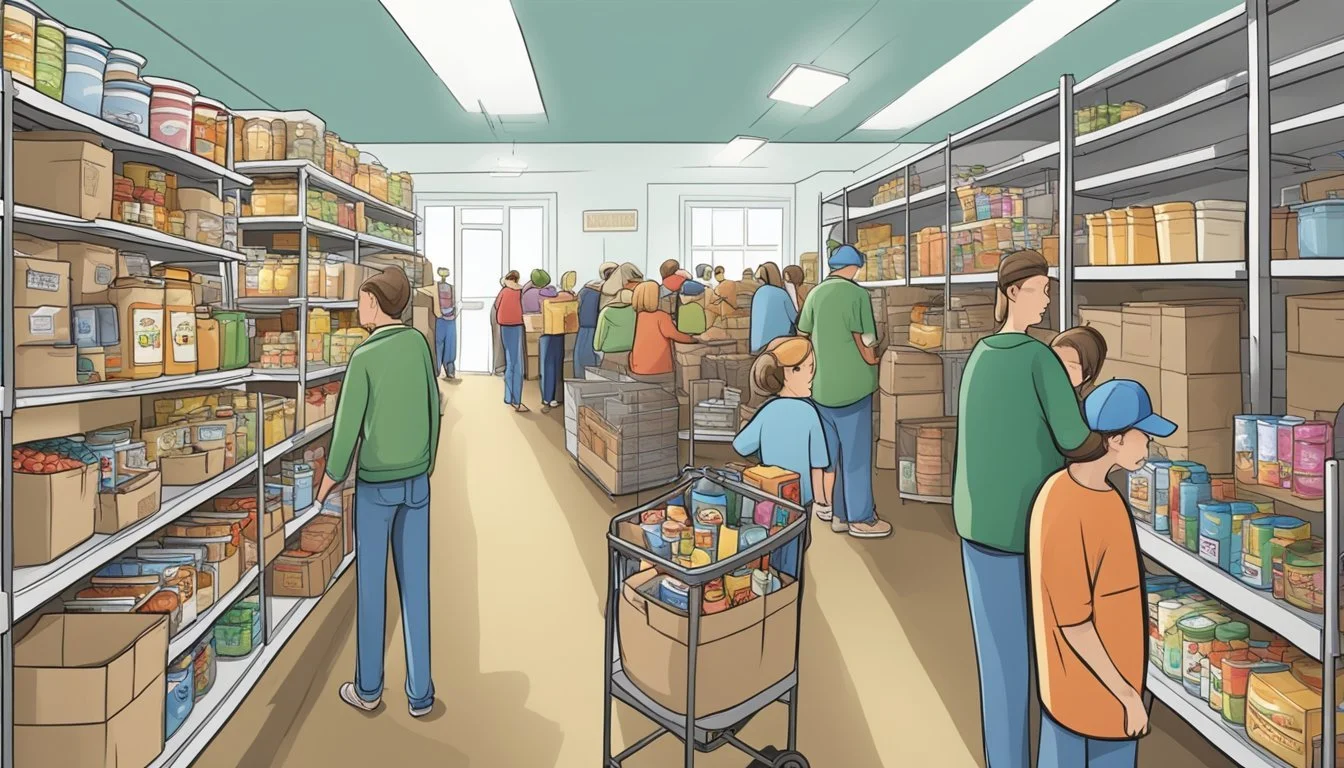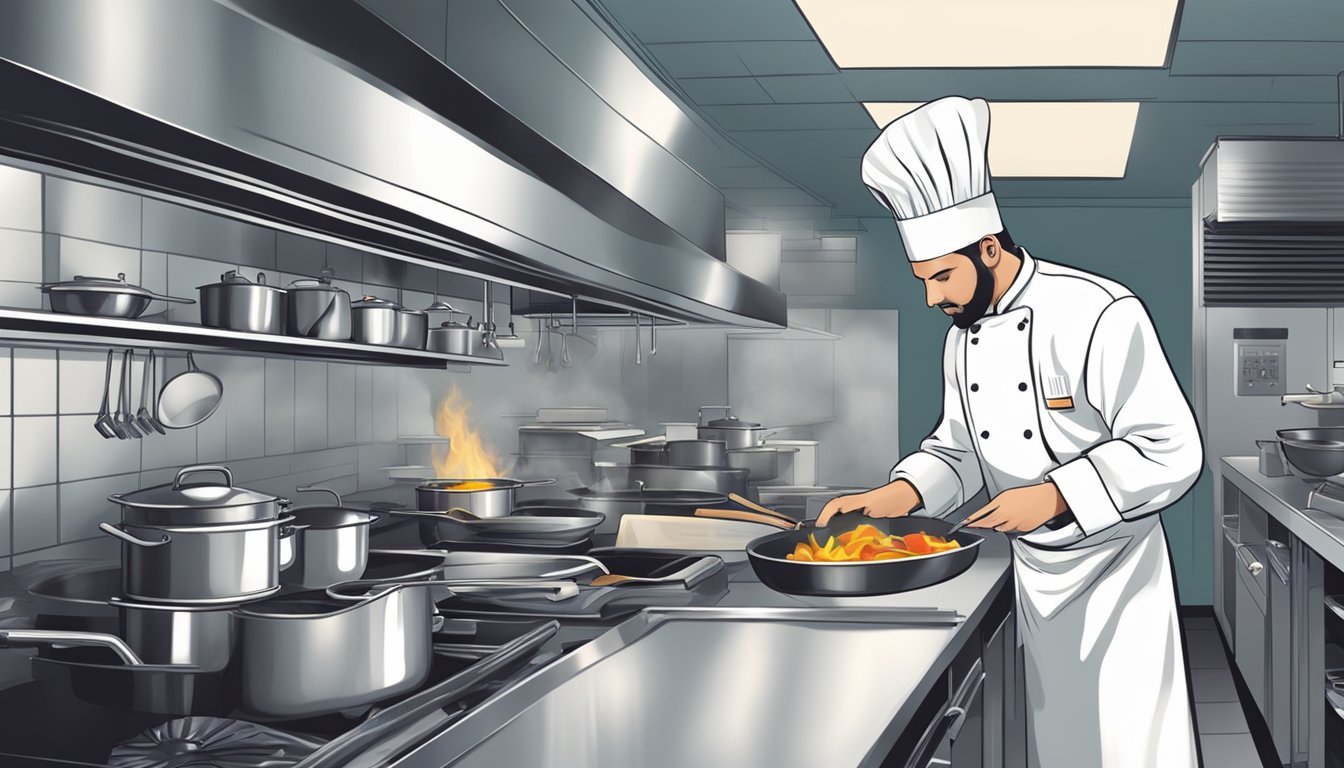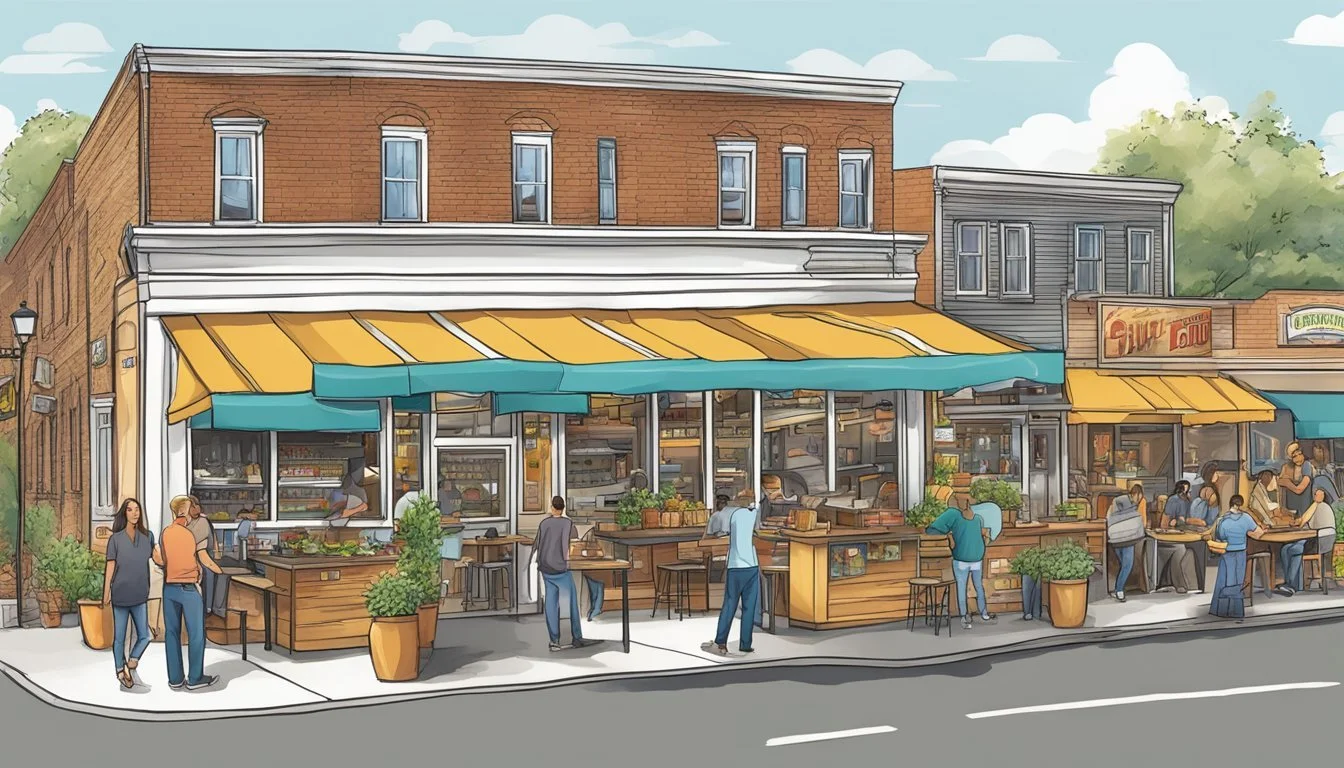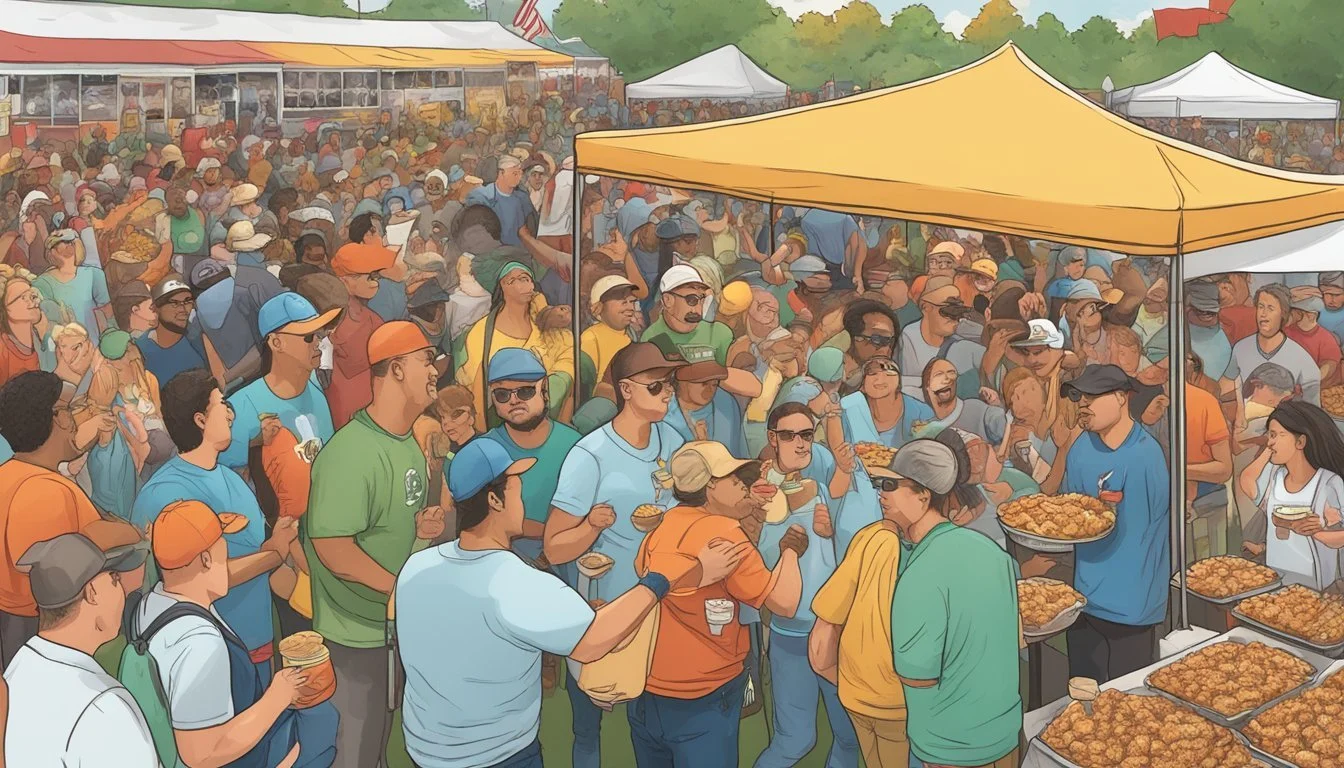Maryland Food Challenges
A Guide to the State's Ultimate Eating Contests
Maryland, famous for its culinary delights like steamed crabs (What wine goes well with crab?) and crab cakes (how long do cakes last?), offers an adventurous twist to food enthusiasts through its array of food challenges. These challenges cater to those seeking to test their eating limits, whether for the thrill, the glory, or the free meals that often come as a prize. From towering stacks of burgers to massive pounds of steak, Maryland's food challenges present a unique and engaging way to experience the state's local cuisine.
Restaurants across the state host these eating contests, inviting both locals and tourists to take on gargantuan portions within set time limits. The T-REX Challenge at The BBQ Joint in Easton, for example, is a meat-lover's dream, featuring a smorgasbord of barbecued meats (What wine goes well with barbecued meats?) and sides. Meanwhile, Steak and Main in North East dares diners to devour a 76-ounce steak along with sides, rewarding the successful with not just a meal on the house, but a cash prize as well.
These challenges not only offer a memorable dining experience but also reflect the culture and hospitality of Maryland, where food is celebrated and shared. As competitors sit down to tackle these feasts, they immerse themselves in the state’s rich food heritage, which is as much a part of Maryland's identity as its picturesque landscapes and storied past.
Overview of Maryland Food Challenges
Maryland faces a range of food challenges, with the prevalence of food insecurity being a significant issue. Food insecurity refers to the lack of consistent access to enough food for an active, healthy life. Despite Maryland's relative wealth, approximately one-third of its residents experience food insecurity. This state of affairs exacerbates the hardships for many, including children and the elderly.
The COVID-19 pandemic has played a role in increasing food insecurity due to the loss of jobs and income, disrupting the supply chain, and adding strain to food assistance programs. However, extended government benefits provided temporary relief, which highlights the positive impact of support programs. As pandemic relief programs ended, the demand for food assistance saw a sharp increase, indicating a direct correlation between support programs and food insecurity levels.
Challenges
Economic Disparities
COVID-19 Effects
Sustained Assistance
Description
Despite ranking as the wealthiest state in the U.S., disparities continue to cause widespread hunger.
Pandemic-related job losses and economic instability have directly affected food security.
Post-pandemic, there is an urgent need for continued and robust support programs.
Efforts to combat these challenges involve a multi-pronged approach, including food banks, non-profit organizations, and community-based initiatives. The Maryland Food Bank plays a crucial role, shown in their detailed analysis of the issue, including county-level food insecurity data. Additionally, organizations like Maryland Hunger Solutions keep providing local data on federal nutrition program participation to aid in the effort against hunger.
The data and research provided by these and other entities help to guide policy and ensure targeted intervention where it is most needed. Collectively, they work towards creating sustainable solutions to end hunger in Maryland.
History and Evolution of Food Challenges in Maryland
Maryland's culinary scene has a storied past with food challenges, showcasing an enduring fascination with competitive eating. This section provides insights into the historical roots and how the advent of social media contributed to a spiking interest and participation in these gastronomic contests.
Origin of Competitive Eating in Maryland
Competitive eating in Maryland finds its roots in local festivals and fairs where community members competed informally to see who could consume the most of a particular food item. Over time, these grassroots events gave birth to more organized food challenges, often held at local restaurants and public gatherings. Such competitions have become a staple for showcasing regional foods and the state's rich cultural heritage through culinary feats.
Popularity Growth Through Social Media
With the rise of social media platforms, food challenges in Maryland have witnessed a significant increase in popularity. Eateries often promote their food challenges online, tapping into the natural human drive for competition and attracting diners seeking both the thrill of victory and online recognition. Platforms like Facebook, Instagram, and YouTube have been pivotal in spreading knowledge of these events, as participants and spectators alike share their experiences. This digital word-of-mouth has not only popularized competitive eating but also turned it into a viral phenomenon, with challenges frequently being shared across the internet, inspiring even greater participation.
Types of Food Challenges in Maryland
Maryland offers a diverse array of food challenges catering to both local tastes and the craving for extremes. These contests range from massive burgers to spicy feasts, each adding to the rich food culture of the state.
Burger Challenges
In Maryland, burger challenges often push the limits of appetite. One notable contest is the Brew Brothers' "Gregg's" Burger Challenge in Baltimore, challenging participants to consume a deluxe burger under a time limit. For those with a colossal hunger, there's the "5 pound burger" challenge, where a single contestant faces off with a gigantic multi-layer burger.
Spicy Challenges
Maryland's spicy challenges set the stage for heat seekers. The "El Toro Grande" challenge dares individuals to endure a meal laced with some of the hottest peppers. These spicy challenges not only test one’s taste buds but also their endurance and resolve.
Seafood Challenges
Given Maryland's proximity to the Chesapeake Bay, it's no surprise that seafood challenges are prominent. These challenges often focus on local specialties such as crab cakes (What wine goes well with crab cakes?) or oysters, where participants race against the clock to consume large quantities of these maritime delicacies.
Dessert Challenges
As for dessert challenges, Maryland offers a sweet reprieve from the savory tests of meat and seafood. The 5 pound sundae challenge tempts those with a sweet tooth and a large appetite. It is an extravagant heap of ice cream and toppings that contestants attempt to finish in one sitting.
Maryland's varied food challenges provide a landscape for those willing to test their culinary limits, whether through size, spice, local flavors, or sugar-laden indulgences.
Notable Food Challenges Across the State
Maryland offers a bevy of food challenges that cater to the daring and the hungry. From colossal burgers in Bethesda to mouth-watering brisket feats in Baltimore and the ultimate seafood competitions along the Chesapeake Bay, the state's food challenge scene is as diverse as it is thrilling.
Bethesda's Burger Battles
In Bethesda, the burger scene rises to new heights with challenges that push the boundaries of appetite. Montgomery County is home to astonishing feats such as the 14-patty burger monstrosity that combines cheese, lettuce, onion, and a special sauce. Accompanied by a pound of fries and a 32-ounce soda, this food challenge is not for the faint of heart.
Baltimore's Brisket Bonanzas
Baltimore elevates the art of barbecue with its brisket challenges that are as much about endurance as they are about flavor. Astounding challenges like the T-REX Challenge include a whole barbecue chicken, a rack of ribs, and impressive amounts of brisket and pulled pork teamed with sides of mac & cheese, apple sauce, and potato buns.
Chesapeake Bay Seafood Showdowns
The Chesapeake Bay area, known for its rich seafood, hosts seafood showdowns that are a testament to Maryland's culinary traditions. Contenders face off to consume immense platters of fresh, local seafood, showcasing the bounty of the Bay in competitions that draw locals and visitors alike.
Addressing Food Insecurity Through Challenges
In Maryland, innovative efforts such as food challenges have been catalytic in raising funds and increasing awareness about hunger, particularly in the midst of the coronavirus pandemic. These community-centric initiatives often involve the public and partners coming together in support of organizations like the Maryland Food Bank.
Food Challenges as Fundraisers
Food challenges, designed as fundraisers, are instrumental in obtaining the necessary resources to combat food insecurity. For instance, one of the key strategies employed by the Maryland Food Bank involves hosting events where participants raise money by engaging in various food-related activities. It is reported that the Maryland Food Bank spent a staggering $28 million on food purchases in a year, evidencing the scale of efforts required to address hunger.
Participants and sponsors alike are drawn to these challenges, providing a flow of funds that enable nonprofits to buy food in bulk and distribute it effectively. In addition to raising money, these events also provide a platform for local businesses and individuals to become long-term partners in the fight against poverty and hunger in Maryland.
Increasing Awareness about Hunger
Increasing awareness is a fundamental aspect of addressing food insecurity. Educational campaigns and events are critical in highlighting the reality that even in wealthier states like Maryland, hunger can be a pervasive issue. They have detailed how the pandemic exacerbated underlying issues, resulting in a substantial rise in Marylanders needing assistance.
Through these events, stories are shared, and facts are presented, which serve to educate the community about the complexities of food insecurity. They demonstrate how even short-term support solutions can have a lasting impact on reducing hunger. By staying informed, Marylanders are more likely to recognize the signs of hunger in their communities and be driven to support local hunger solutions.
Health and Safety Considerations
Participating in Maryland's food challenges and making dietary choices come with inherent health and safety considerations. It's crucial to address the potential risks and promote education and awareness regarding nutritious food choices to ensure well-being.
Risks of Competitive Eating
Competitive eating can be a dangerous endeavor for participants. Events often encourage consuming large quantities of food in short timeframes, posing risks such as choking, gastrointestinal distress, and food poisoning. The pressure to win may also lead to long-term health issues like obesity, which is linked to a myriad of chronic diseases. Individuals considering participating in a food challenge should be acutely aware of these dangers and be prepared to face the potential adverse health outcomes.
Promoting Nutritious Food Choices
On the flip side, there's a growing emphasis on education and awareness in Maryland to promote nutritious food choices. Initiatives are in place to encourage the consumption of vegetables and fruit, which are rich sources of essential vitamins, minerals, and fiber. These efforts aim to combat the prevalence of obesity by advocating for a diet rich in whole, unprocessed foods. Here's a brief overview of how this is encouraged:
Educational Programs: They teach the benefits of incorporating a variety of vegetables and fruit into one's diet.
Awareness Campaigns: Focused on informing the public about the risks associated with unhealthy eating patterns.
By equipping individuals with the knowledge to make informed food choices, Maryland works towards a future where food challenges are approached with a safety-first mindset and where nutritious food is a staple in every household.
The Role of Local Businesses and Restaurants
Local businesses and restaurants across Maryland play a pivotal role in hosting and sponsoring food challenges, thereby creating buzz and providing unique dining experiences. Such events often serve to highlight specialty dishes and bolster community engagement.
Hosting and Sponsorship Opportunities
In the realm of competitive eating and food challenges, local entities like Baltimore's own restaurants often step up as hosts. These venues provide the necessary space and audience for events, such as local hot dog eating contests, which not only draw in crowds but also set the stage for memorable community gatherings. Partners for these events may include various food vendors and suppliers, who see these challenges as an opportunity to showcase their products and gain visibility. For participants, the allure of winning a free meal or other prizes adds to the excitement and competitive spirit.
Creating Signature Food Challenges
Signature food challenges are a hallmark for many Maryland restaurants, offering up dishes like a massive pulled pork sandwich with coleslaw and french fries to daring diners. These challenges are not merely about the size of the meal but also about the unique flavors and combinations that resonate with the local palate. Establishments often use these food trials to cement their identity within the food scene, highlighting their culinary strengths and creativity. By doing so, they not only address the desire for entertainment and novelty among patrons but also carve out a distinctive reputation in a crowded market.
Community Engagement and Volunteerism
Community engagement and volunteerism are vital in addressing Maryland's food challenges. They mobilize resources and unite partners to strengthen the response to food insecurity.
Volunteering at Food Banks
Volunteers play a crucial role at Maryland food banks, dedicating their time to sort donations, package meals, and distribute food to those in need. For example, the Maryland Food Bank relies heavily on volunteers to manage the influx of SNAP (Supplemental Nutrition Assistance Program) eligible products and maintain operations. Here are some specific ways volunteers impact the food bank:
Sorting and Packaging: Volunteers sort through donations meticulously, ensuring that food items are safe for consumption and appropriately packaged.
Distribution: They assist in the strategic distribution of resources, directly affecting countless lives through their efforts.
Engagement Through Social Media
Social media platforms serve as powerful tools for engagement, allowing food banks and community organizations to share their needs and coordinate volunteer efforts in real-time. They connect partners and community members by:
Awareness Campaigns: Informing followers about ongoing food drives, volunteer opportunities, and the importance of donations.
Resource Sharing: Amplifying messages on how the community can contribute, whether through time or donations, thus pooling together vital resources.
Research and Studies on Food Challenges
Intensive research efforts unfold across Maryland to delineate the myriad food challenges the state faces. These initiatives aim to bridge the knowledge gap and foster informed strategies for mitigation.
Academic Research at Johns Hopkins
The Johns Hopkins University has been instrumental in conducting thorough research on food challenges, particularly in the context of COVID-19's exacerbating effects. Investigations focus on understanding the disparity in food distribution and the resulting impact on urban communities. Studies from Johns Hopkins contribute significantly to national insights utilized by organizations like Feeding America and the Food Research and Action Center.
Nonprofit Research Contributions
Nonprofit organizations have been pivotal in assessing food insecurity and shaping interventions. The Maryland Food Bank has published research that evaluates the systemic and economic roots of hunger, while also highlighting the post-pandemic shifts in food demand. Their analysis provides a granular view of Maryland's context within the larger framework of national data and trends.
Future of Maryland Food Challenges
Maryland continues to see an evolving landscape in its food challenges, with shifts in participant behavior and innovation in format expected to shape the future experiences.
Trends and Predictions
The nature of food challenges in Maryland is influenced by a variety of factors, including public interest in competitive eating and dietary trends. In recent years, there has been a surge in health-consciousness that may impact the popularity of traditional food challenges. As a result, one might anticipate a trend towards challenges that not only test endurance but also incorporate elements of nutritional balance and ingredient sourcing. This may manifest in contests that stress the use of local, sustainable ingredients or vegan options, meeting both the competitive spirit and ethical standards.
Moreover, the social media revolution continues to play a pivotal role, with participants and spectators alike seeking shareable content. Food challenges are likely to become more visually spectacular, aiming to go viral and attract wider online audiences.
Innovative Challenge Concepts
Innovation remains key to keeping food challenges fresh and engaging. Maryland's food scene could see the introduction of new challenge concepts that blend dining with immersive experiences.
Augmented Reality: Challenges could integrate augmented reality, offering an interactive layer to the experience, such as trivia about the meal's origin while eating.
Culinary Mash-ups: Competitors might encounter mash-up dishes that combine different cuisines, testing adaptability and palette range.
Timed Gastronomic Quests: Instead of sheer quantity, timed challenges that require completion of culinary tasks or discovery of flavors add a dynamic twist.
With these innovations, Maryland aims to redefine food challenges as not just contests of capacity, but symphonies of taste, skill, and sustainability.
Through these expected developments, Maryland's food challenges are poised to continue captivating participants and audiences, while reflecting broader societal shifts toward wellness and engagement.
Resources and Further Reading
This section provides carefully selected resources for those interested in exploring the various aspects of Maryland's food challenges, such as local efforts, reports on food insecurity, and publications on health and nutrition. Each resource is tailored to offer a deeper understanding of the issues and initiatives within the state of Maryland.
Local Food Challenge Guides
Maryland Food Bank: Provides comprehensive insights into local food distribution programs designed to alleviate hunger. The Mobile Market Program Evaluation offers a specific lens into the effectiveness of food access improvement efforts across Maryland.
Partner Collaborations: Local organizations frequently partner with food banks to tackle food challenges. These collaborations often result in guides that enable individuals to partake in efforts to reduce hunger and increase food security within their communities.
Food Insecurity Reports
Impact Studies: The Maryland Food Bank conducts studies on the impact of food insecurity across various Maryland communities. This includes data-driven assessments of hunger and its correlation with economic factors in the state.
Maryland Hunger Solutions: As a dedicated entity, they produce reports that discuss the scale of food insecurity and evaluate the state and federal responses to mitigate this issue.
Health and Nutrition Publications
Food Bank Nutrition Initiatives: Publications from entities like the Maryland Food Bank shed light on the relationship between food insecurity and nutrition. They emphasize the necessity of providing not just food but healthy options to encourage healthy choices for those facing hunger.
Educational Resources: There is a multitude of resources focusing on education about diet, health, and nutrition, aiming to improve the well-being of Marylanders through knowledge dissemination and practical advice.











